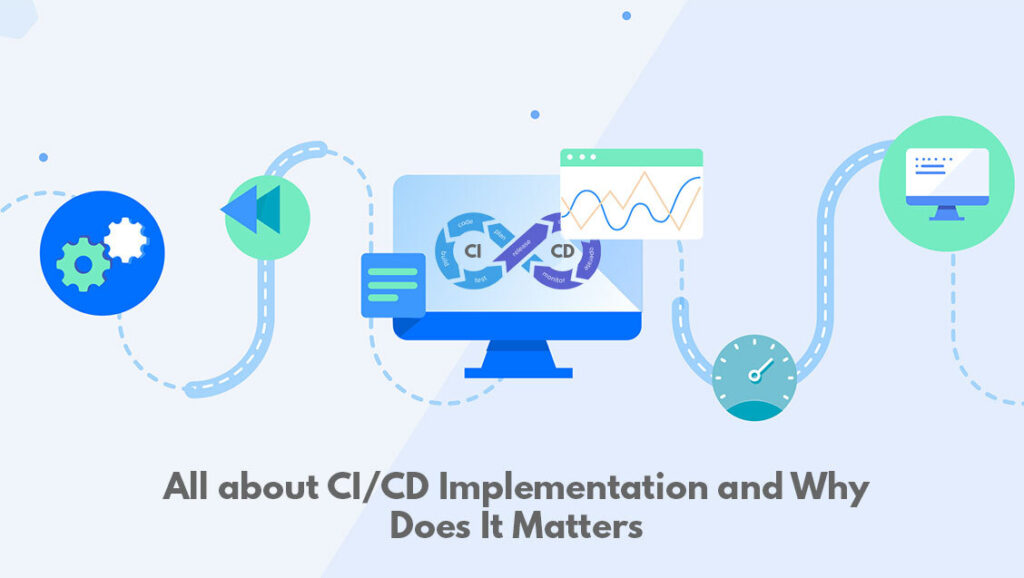
Reading Time: 2 mins.
Overview
The CI/CD is a set of methods used to deploy code-changes more readily and frequently via automation. It stands for Continuous Integration and Continuous Delivery/Deployment, practice in the DevOps culture, i.e. a combination of Development and Operations practices that aims to deliver application at a faster pace. Almost every modern and the software-centric company requires releasing of frequent and stable software, and this is where the CI/CD pipeline comes to the rescue.
Why does it matter?
The development of an application relies on the contribution of multiple developers and involves frequent integration. When a developer integrates code-change into the mainline code base, it may have its impact on other developer’s code-change too. This leads to loads of defects ending up in the production stage unless and until the developers’ team rollback to fix bugs.
However, with the use of this CI/CD pipeline, every code-change is built and tested automatically where the code analysis runs against it. Once the quality gates approve this tested code, it is then deployed automatically, followed by an Acceptance Testing. The ultimate focus is to sustain the application in a deployable state at all times and thereby, to be open for user feedback.
Why go with the CI/CD Implementation?
The CI/CD plays a significant role in retaining the code quality, detecting bugs at an early stage and increasing visibility. By using this practice, you can commit even the smaller code-change into the repo at any time. Further, via continuous testing, delivery and deployment, these smaller changes are automatically tested and deployed more frequently to the production environment.
Key Benefits:
- End-to-end security
- Always production-ready-software
- Automated deployment
- Automated rollback
- Faster release cycles
- Backlog with reduced bugs
- Instant user-feedback
The different stages of the CI/CD pipeline
The pipeline follows an organized, well-structured and comprehensive stages. The following are the five primary stages of the CI/CD pipeline.
Commit and Build: The developers build a new code in isolation and commit it into a shared repository a number of times a day. The new feature which is built from the extracted code is then pushed into a test environment.
Testing: Soon after the Commit and Build phase, the software is tested for Unit testing, Smoke testing, Sanity testing, and Integration testing.
Deploy to Staging (Mock): In this step, the build is released to the staging environment. The aim is to ensure the quality of the software under the production-like environment.
Auto-testing: Once again, a testing phase needs to be followed if you prefer deploying first to the mock environment rather directly onto the production environment. Thus, another set of testing types such as Acceptance testing, UI testing, etc. are followed to validate whether the software meets all its end-user requirements.
Deploy to Production: It is the final stage of the entire CI/CD pipeline. Once the software passes all the phases, it is then all set to deploy to the production (or end-user) environment.
CI/CD Pipeline Overview:
Once we create the pipeline it’s very easy to detect the early bugs, build fails and notifications etc. After setting up the pipeline using Jenkins or some other tool, you will get the following workflow, but the GUI may vary from one tool to another.

Final Thoughts:
In today’s environment, the efficacy to provide quality and production-ready-software can be achieved only by investing time and money on the right practice and resources. One such practice was the CI/CD pipeline. Being part of the Agile methodology, it contains the flexibility and scalability to retain a software in a deployable state and thereby, to keep track of the end-user feedback.